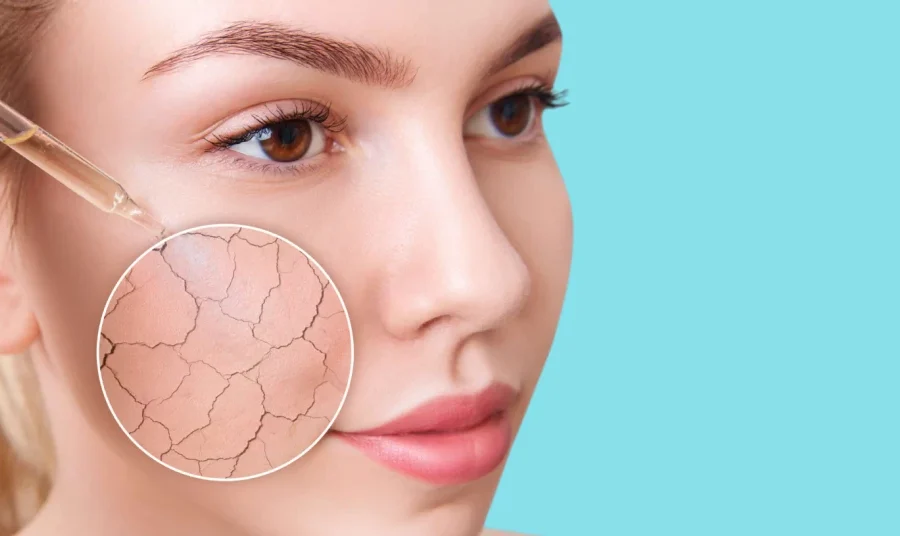We explain what “strawberry skin” is, how it appears, and whether it’s possible to get rid of it.

“Strawberry Skin” or Keratosis Pilaris: What is it?
“Goose skin,” “chicken skin,” “strawberry skin,” “red spots”—these are just a few of the names for keratosis pilaris. If you’ve ever noticed small, rough bumps densely scattered on your arms, thighs, or other areas of your body, which resemble little “spikes,” it’s likely this condition.
Is this skin characteristic the “end of the world”? No. However, it can cause aesthetic discomfort for many people.
So, what exactly is keratosis, where does it come from, and can it be managed?
What is Keratosis Pilaris?
Keratosis pilaris is a skin condition in which keratin, a protein that forms the main component of our skin, hair, and nails, accumulates in pores (hair follicles). As a result, small bumps appear, which can feel rough, like sandpaper. These bumps are most often found on the shoulders, thighs, and, less commonly, on the face.
The bumps can be the same color as your skin or have a reddish tint. They don’t cause pain or itching, but their rough texture can be annoying.
Why Does Keratosis Pilaris Occur?
The causes of keratosis pilaris are not fully understood, but genetics are known to play a role. If one of your parents or close relatives suffers from “goose skin,” it’s not surprising that you may experience it as well. Usually, keratosis pilaris appears during childhood or adolescence, and over time, it may lessen or even disappear (but not always).
Another risk factor is a tendency toward atopic dermatitis, dry skin, and even seasonal changes. Many people notice a worsening of keratosis pilaris in winter when the air is dry, skin loses more moisture, and becomes dehydrated, requiring more intensive care and attention.
How to Care for Skin with Keratosis Pilaris?
There’s good news and bad news:
The bad news: It’s impossible to get rid of keratosis pilaris forever, unfortunately.
The good news: Proper skincare can significantly reduce its appearance, lead to remission, and make the skin smoother.
Here are some key skincare tips:
- Regular Moisturizing: Dry skin is your main enemy when it comes to “goose skin.” Use moisturizers with ingredients that help retain moisture, such as hyaluronic acid or urea. The best time to apply cream is right after a shower, while the skin is still slightly damp.
- Exfoliation: Exfoliation helps remove dead skin cells that block pores. But don’t overdo it! Instead of aggressive scrubs, choose products with acids like lactic, salicylic, or glycolic acid. These effectively dissolve the keratin layer without damaging the skin.
- Avoid Aggressive Exfoliation Methods: Using harsh scrubs, dry brushes, or other mechanical exfoliation methods can have the opposite effect—the skin may begin to regenerate more actively, leading to more bumps.
- Clothing Choices: Synthetic fabrics and tight clothing can irritate the skin and worsen keratosis pilaris. Opt for natural fabrics that allow the skin to breathe.
- Gentle Skin Cleansing: Use mild, hypoallergenic cleansers without harsh surfactants. Soaps and shower gels with aggressive ingredients can dry out the skin, worsening the condition.
Can a Doctor Help?
In most cases, keratosis pilaris does not require medical intervention. However, if you’re concerned about its appearance and home care doesn’t give satisfactory results, you can consult a dermatologist or cosmetologist. There are professional procedures that can improve skin condition:
- Chemical Peels: Procedures using acids, such as glycolic acid, can effectively reduce keratosis pilaris. However, the effect is temporary, and regular treatments are needed to maintain results.
- Laser Therapy: Some types of lasers, like fractional CO2 or Nd:YAG, help reduce redness and smooth the skin. This method generally provides longer-lasting effects compared to topical treatments.
- Medical Ultraviolet Light: In the colder months, UV lamps can help reduce keratosis pilaris symptoms, especially if redness accompanies it.
Remember, the effect of cosmetic procedures will be better if supported by proper home care.
Get to Know Your Skin
If you have keratosis pilaris, it’s important to understand that this condition cannot be completely cured but can be managed. Consistent care and the right approach will help minimize its appearance and put it into remission.
Learn to understand your skin: observe what affects it and choose your skincare routine accordingly.
Remember that when it comes to skin health, it’s best to proceed cautiously. Avoid aggressive, radical methods and instead be patient. Don’t forget: achieving a lasting and high-quality result takes time and effort. Any new product should be introduced gradually to avoid irritation and unpredictable skin reactions.



Leave a Comment